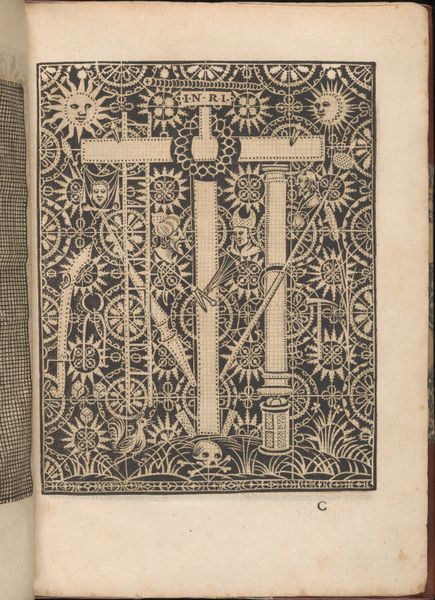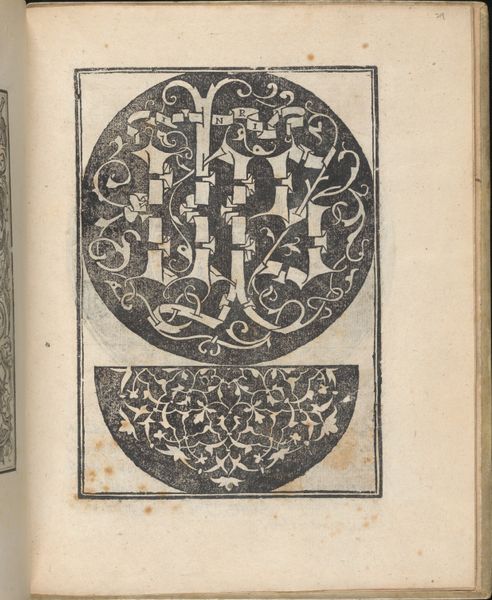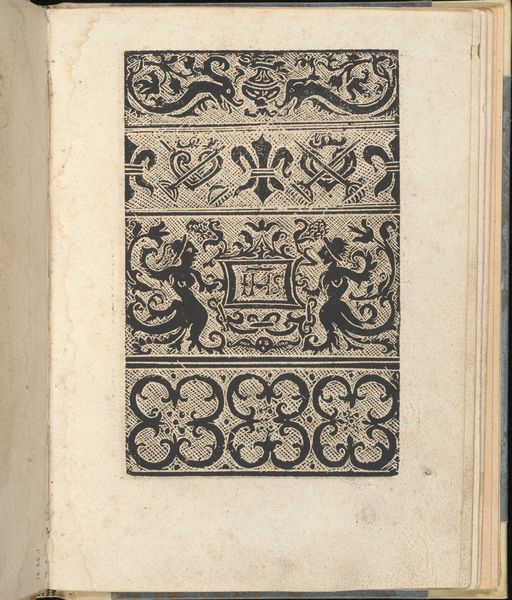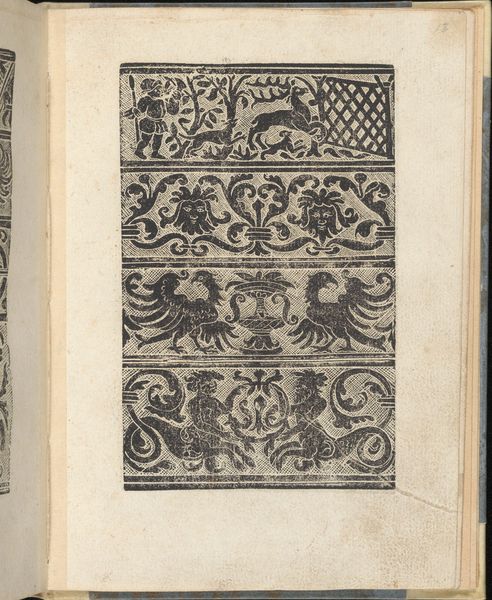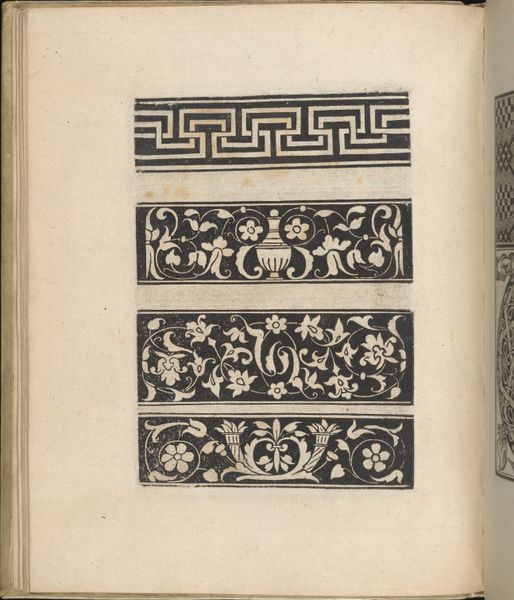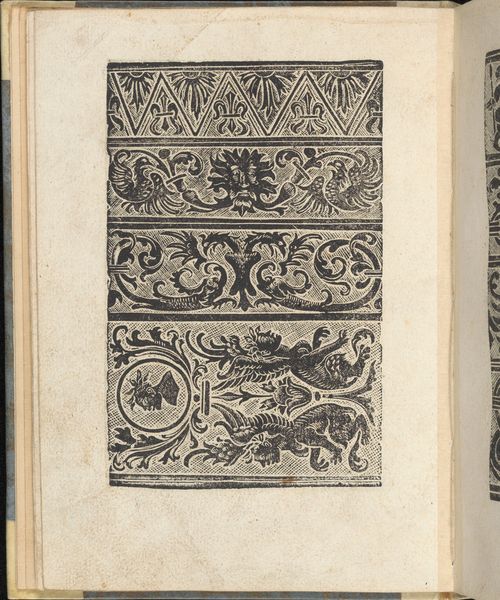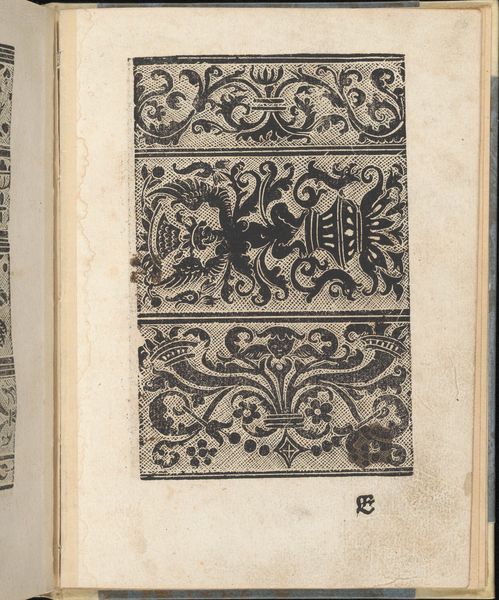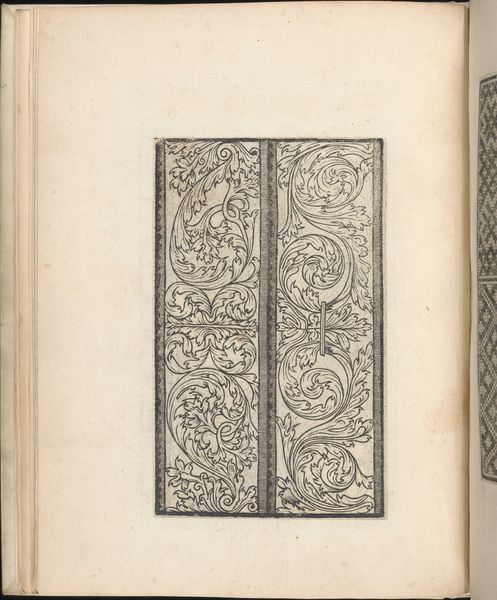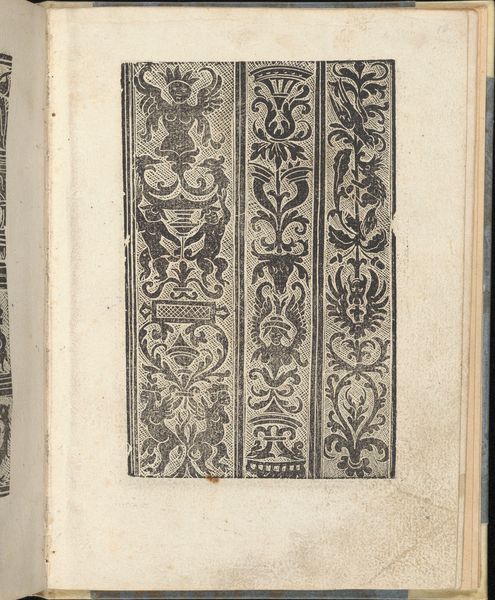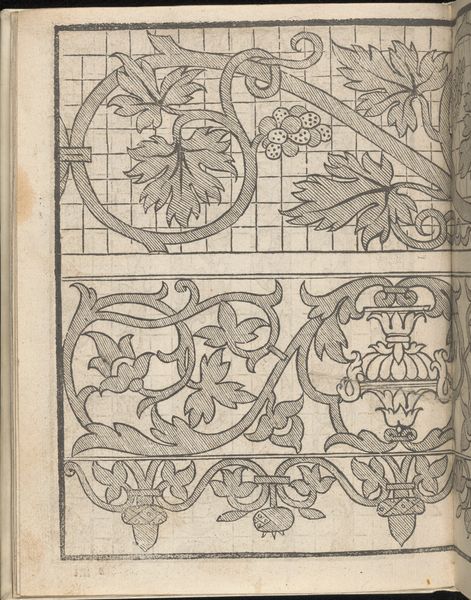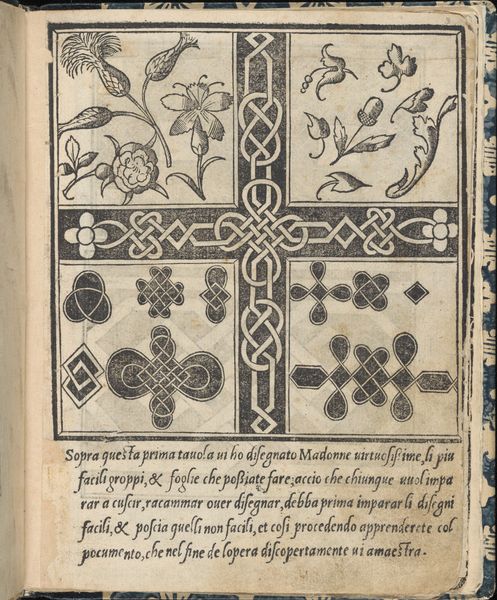
Les Secondes Oeuvres, et Subtiles Inventions De Lingerie du Seigneur Federic de Vinciolo Venitien, page 5 (recto) 1603
0:00
0:00
drawing, print, textile, engraving
#
drawing
# print
#
textile
#
11_renaissance
#
decorative-art
#
engraving
Dimensions: Overall: 9 7/16 x 6 1/2 in. (24 x 16.5 cm)
Copyright: Public Domain
Editor: This is page 5 from *Les Secondes Oeuvres, et Subtiles Inventions De Lingerie* by Federico de Vinciolo, printed in 1603. It seems to be an engraving showcasing different textile patterns. The designs feel intricate and formal, very much of the Renaissance. What purpose did such prints serve at the time, and what do you read into its patterns? Curator: It’s important to understand that Vinciolo's pattern books were not just pretty pictures; they were instrumental in disseminating Italian fashion and needlework techniques across Europe. The luxury displayed here highlights social aspiration, reflecting the desire among the burgeoning middle class and aristocracy to emulate Italian elegance. Editor: So it was kind of a manual, a status symbol and an inspiration all rolled into one? Curator: Precisely. Consider how the printing press democratized access to these designs. Before mass printing, such elaborate patterns would have been restricted to the wealthiest elites, produced by skilled artisans for individual commissions. The book becomes a tool, not just for acquiring technical skill, but also for participating in a visual culture. And in doing so, they also promoted Vinciolo's workshop and talent. Look closely: do these patterns remind you of something? Editor: Now that you mention it, some resemble architectural details... like, the lace border looks like a frieze, perhaps? Curator: Good eye! The designs borrow from architectural and classical motifs. This blending of different art forms indicates the value placed on sophistication and artistry in everyday life. People truly saw and engaged with these as art. Editor: This has given me a completely new way of looking at printed patterns; it’s more than just decorative, it's a political act of sorts. Curator: Exactly, art reflects aspiration and defines status. And by teaching, pattern books changed the status quo of textile design itself.
Comments
No comments
Be the first to comment and join the conversation on the ultimate creative platform.
